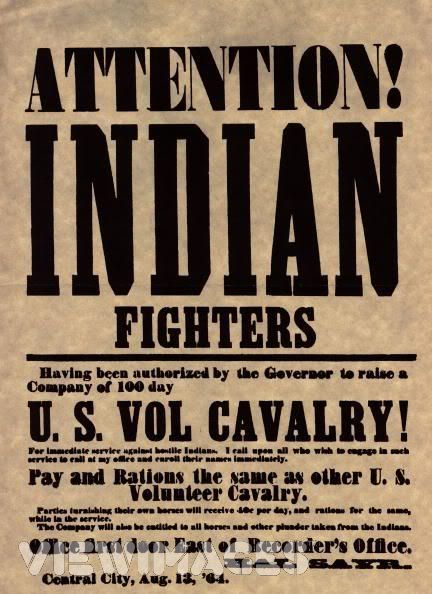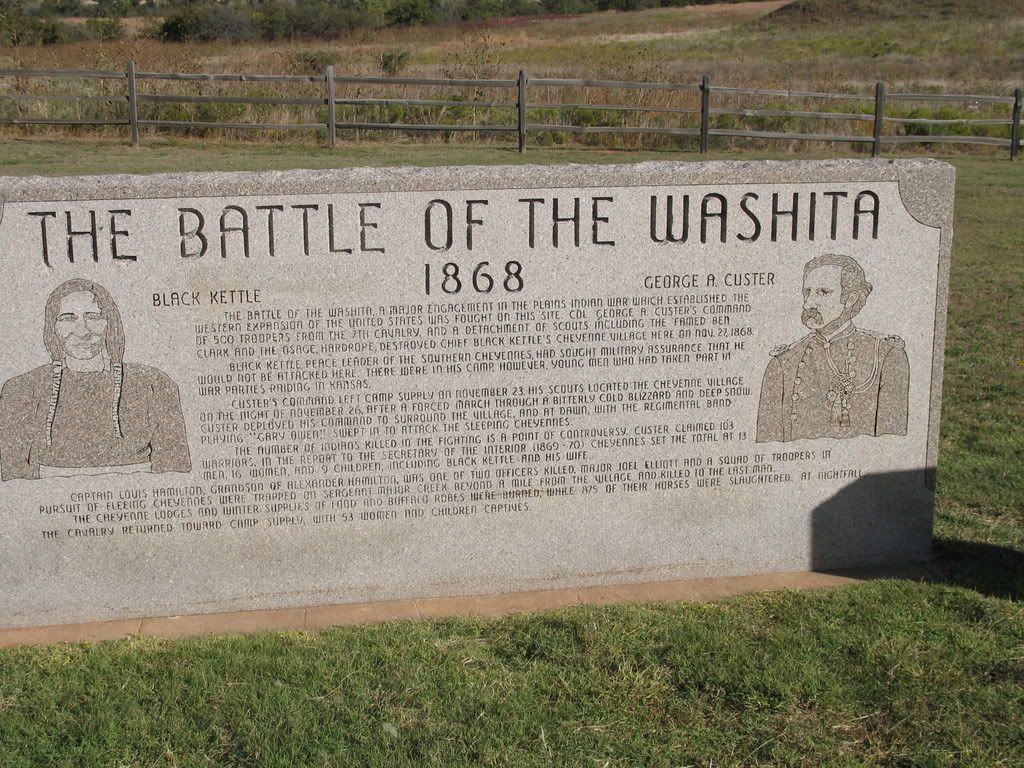The Sand Creek Massacre and the Washita Massacre both led to the Wounded Knee Massacre. The Sand Creek Massacre brought the realization that “the soldiers were destroying everything Cheyenne – the land, the buffalo, and the people themselves,” and the Washita Massacre added even more genocidal evidence to those facts. The Sand Creek Massacre caused the Cheyenne to put away their old grievances with the Sioux and join them in defending their lives against the U.S. extermination policy. The Washita Massacre did that even more so. After putting the Wounded Knee Massacre briefly into historical perspective, we’ll focus solely on the Wounded Knee Massacre itself for the 117th Anniversary of the Wounded Knee Massacre.
Category: Teaching
Dec 24 2007
Right-Wing War on Christmas Vets: Why They Fight
Among the mouth-breathingest of mouth-breathing Republicans, it’s a well-known fact that every November or so, we libruls gather in our covens and plot the paganization of Christmas. In theirLeft Behind-style fantasies, we are the legions of Satan, come upon the Earth to foist secular ideas and Godless traditions upon the flock of the Lamb. They claim that only the Bible stands in defense of the faithful against the pernicious attacks of the heathen First Amendment, and that we will not be satisfied until we have, Egyptian-like, eradicated every trace of monotheism from our once-God-fearing civilization. Each year, the scarred veterans of the (self-)Right(eous) stir their zealots to action, and in public squares and mangers throughout the land, battles over the soul of American culture are waged.
As in all wars, sometimes an enemy’s gallantry on the field of battle impresses even a bitter foe – Napoleon, remarking on the Russian cavalry then crashing into his lines, said “Now these are Kossacks!” – and it’s in this spirit that Brandon Friedman suggested we take a moment to cite the valor of our opposition. Others (links below) have done a great job “honoring” individual wingnut actions – now join me, if you will, in the Cave of the Moonbat, where we’ll take a look at what, exactly, they’re fighting for.
Dec 22 2007
Excuses
I turned in my grades at 3:45pm on Wednesday afternoon. I had 45 minutes to spare. Some years I have less than that.
The truth is I generally run out of motivation to grade prior to actually having to do the grading. In some respects, the lack of interest some of my students display drains me of the motivation I think I should have. As much as we would like to have students who think that they should give maximum effort in each of their classes, that’s very often not the case.
I gave three incompletes this past semester. That’s three more than I usually do. I will do just about anything to avoid giving an incomplete. I think I’ve mentioned before my hatred of paperwork.
Originally posted as part of Teacher’s Lounge
Dec 18 2007
Leaving “No Child Left Behind” Behind
this is crossposted from Daily Kos, which will explain some of the dkos specific references
Our No. 1 education program is incoherent, unworkable, and doomed. But the next president still can have a huge impact on improving American schooling.
So says perhaps the most cogent writer on educational matters, Richard Rothstein, in a piece in he American Prospect whose title, like that of this diary, is Leaving “No Child Left Behind” Behind Before The New York Times lost its senses, Rothstein wrote columns regularly on educational matters. Those of us who try to help the general public and policy matters understand the reality of educational policy have often drawn some of our bgest arguments from his work.
The article, which became available online yesterday, presents the key issues as well as they can be presented, and there is little I can add, although I will offer a few comments of my own. The notable educational figure Deborah Meier has said that we should blog about this and distribute the article as widely as possible. I urge you to consider doing what you can, including if warranted recommended this diary, to make the article as visible as possible.
Dec 17 2007
A Pharaohship to Forget
He thought he knew better than his people; thought he could, through sheer force of will, change a public mindset centuries in the making. He was an iconoclast (literally) 2000 years before the term would be coined by medieval Byzantines, but within a couple of decades after his rule, the enemies he’d created had obliterated nearly every trace of his reign, as well as the monotheistic religion he had promulgated as a state faith. A victim of an histoicide of staggering proportions, his name was virtually excised from the public record, his monuments altered and defaced, and he was forgotten for almost three millennia.
Join me, if you will, in the Cave of the Moonbat, where tonight we’ll take a look at the sort of thing that would cause a civilization to try to erase one of its own leaders from history. With all the talk of Romney’s misunderstanding of the nature of freedom and religion in America, not to mention the ongoing historical embarrassment that is the Bush Administration, it only seems appropriate. It’s not meant, however, to assert that either the clearly-megalomaniacal President, or his would-be successor is the mental or spiritual equal of the thoroughly remarkable “heretic pharaoh” Amenhotep IV, who called himself “Akhenaton” and whom history sometimes terms the world’s “first individual.”
Dec 15 2007
Contacting the Past
Last night I posted a diary about an email I received from a former student. It contained the following words:
I hope that you can find it in your heart to forgive me for my silence as you struggled to simply live your life. I am a father now, and I would never want my children to have to suffer cruelty that I know you had to deal with when you were in Conway.
The diary (A Letter and a Response) includes my response to this and the rest of the letter.
I would have been remiss to not look at the incident from a slightly more detached viewpoint as well. Here was a student contacting a professor after a decade or more to try to correct an injustice he had perceived himself committing towards that teacher. How often does that happen?
Dec 08 2007
The Microcosm
At the end of a semester, I’m always of the opinion that I’d like to end it on some kind of up note. I haven’t collected the data to see how often that is the case. I suspect it is rare. But that could just be a reflection of how I feel at this moment in time.
We had two meetings of import to the Faculty this week. On Tuesday we met with the Vice President for Academic Affairs/Dean of Faculty to “clear the air.” One of the major issues was shared governance. On Thursday we had a union meeting (AAUP). I suspected that at least one of those was going to result in pissing me off. I was correct in that assumption.
We have a relatively new dean. Since she has been here she has talked about the importance of faculty taking the responsibility for initiatives to improve the plight of the college. Since she has been here, there have been faculty members complaining about how everything is decided at the top and heard about the faculty later.
The disconnect is overwhelming at times.
Dec 03 2007
Starting a Great War
Historical analogies that rely for strength upon generally-held assumptions – often exemplified by a folksy appeal to authority in the form of the phrase, “they say” – carry with them both advantage and disadvantage. The recognition of human nature (“power tends to corrupt…”) does make for convenient shorthand, but as with all generalizations, these little chestnuts also run the risk of imprecision when the discussion goes beyond the super-broad. “They” say, for example, that those who fail to learn from the mistakes of the past are doomed to repeat them, which for an historioranter raises a few interesting questions: What if the circumstances of the times have few, if any, precedent? What if leaders of narrow vision had at their disposal technology that could kill on a scale that had theretofore been unimaginable? What if ideology replaced common sense as a guiding political force?
Join me, if you will, in the Cave of the Moonbat, where tonight we’ll look at the origins of the last war to be called “Great.” Along the way, we’ll encounter nations which based policy around the concept of their peoples’ historical destiny, some guys with great facial hair, and analogies that may fall apart on the micro scale, but get damn scary when looked at through a wider-angle lens.
Dec 02 2007
Reprising Exhaustion
I am tired. No, take that back. That is too much of an understatement of the problem
I am exhausted. I am so exhausted that I was halfway through writing an essay about the semester when I realized that for all intents and purposes, I’d written the essay before, two years ago. So I’ll post that and go take a catnap while you read it and be back when you are done.
Originally posted as part of Teacher’s Lounge.
Nov 29 2007
143rd Anniversary of the Sand Creek Massacre of Nov. 29th, 1864

http://images.google.com/image…
Chief Black Kettle:I want you to give all these chiefs of the soldiers here to understand that we are for peace, and that we have made peace, that we may not be mistaken by them for enemies.
A Cheyenne cemetery is in the same direction as where my mother told me she watched gypsies camp through her west window as a girl, about ½ mile from that house. I have reverently walked though that Cheyenne cemetery as early as ten, looking at the headstones and wondering who they were and where they came from. I did not know then, that in that cemetery were descendants from the Sand Creek Massacre.
Nov 27 2007
The 139th Anniversary of the Washita Massacre of Nov. 27, 1868
The intent to commit genocide at Washita is hidden in plain view, unless key elements are brought together. These are: that the Cheyenne were placed on land where they would starve while promises to avert starvation were broken; that George Bent observed how Civil War soldiers did not harm white women and children by a “code of honor,” while Indian women and children were slaughtered; that Sheridan declared “The only good Indians I ever saw were dead;” and that the War Department did not differentiate between peaceful and warring Indians. Hence, the orders “to kill or hang all warriors.” As the consequence, the intent was to kill all men
of a specific race.
We’ll begin with Custer prior to the Washita Massacre along with the fact that the Cheyenne were forced onto land wherein they would starve.
Nov 26 2007
Vice Presidential Treason, 1807-style
“There! You see? I was right! I was only thirty years too soon. What was treason in me thirty years ago, is patriotism now.”
— Aaron Burr, upon hearing of the Texas Revolt, 1836
Perhaps someday, if the neocon plan works out and America does manage to establish itself as the master of a global hegemony of subject nations and enslaved peoples, the 9% of our fellow citizens who don’t think Dick Cheney sucks will be able to point to some future event and try to use it to vindicate not impeaching the current veep now – but I rather doubt it. History is not kind to fools and poor leaders – and only occasionally rewards the schemers and the scammers – yet it has always been notoriously difficult to pry such men from perches of power, since the people with the ability to do so often lack the chutzpah of their intended target.
Join me, if you will, in the Cave of the Moonbat, where tonight we’ll meet a veep whose poor decision-making skills (and chutzpah) may have actually eclipsed those of Fourthbranch. We’ll also contemplate the scary truth that it wasn’t until after he’d left office that our first Treasonous Veep engaged in his zaniest schemes of usurpation.


